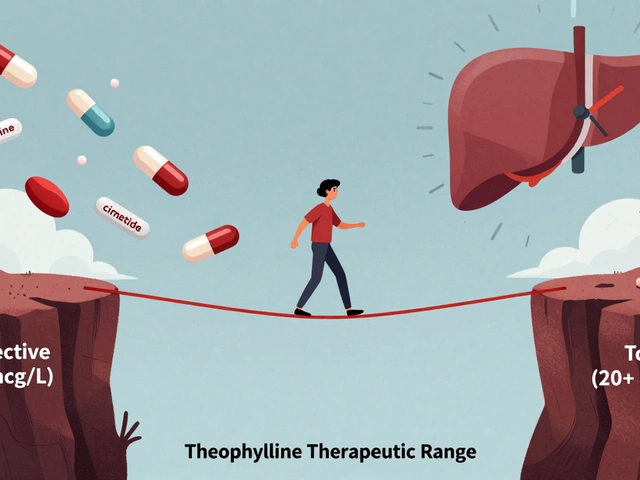
Hair loss affects countless individuals, prompting a search for solutions beyond the often-prescribed Propecia. While Propecia (also known as Finasteride) remains a popular choice, it's not the only option available for those battling thinning hair and receding hairlines. With advancements in both medical and natural hair restoration methods, exploring alternatives can lead to finding the right fit for your lifestyle and needs.
This article will take you through seven noteworthy alternatives that stand as potential contenders in the fight against hair loss. From topical treatments to innovative therapies, each alternative comes with its unique benefits and drawbacks. Dive in and discover which option aligns best with your hair restoration goals, empowering you to reclaim your confidence with a treatment tailored to you.
- Minoxidil
- Finasteride Topical
- Dutasteride
- Saw Palmetto
- PRP Therapy
- Low-Level Laser Therapy
- Hair Transplantation
- Conclusion
Minoxidil
When discussing alternatives to Propecia, Minoxidil often enters the conversation as a prominent contender. Originally developed as a treatment for high blood pressure, Minoxidil has become a well-used topical solution for promoting hair growth and reducing hair thinning.
Available over-the-counter under brands such as Rogaine, Minoxidil’s role in hair restoration was discovered somewhat accidentally but has since gained substantial backing through various studies. It works by stimulating hair follicles and prolonging the growth phase, known as the anagen phase, of the hair cycle.
Pros
- Easily accessible without a prescription.
- Formulated in both liquid and foam forms, allowing users flexibility in application.
- Can be used by both men and women.
- Usually results in effective hair regrowth after consistent use over several months.
Cons
- Requires ongoing use to maintain results; stopping treatment often leads to the resumption of hair loss.
- Potential side effects include scalp irritation and unwanted facial hair growth in some cases.
- The initial use can cause temporary shedding before new growth begins.
According to the American Hair Loss Association, "Minoxidil remains the most powerful drug approved by the FDA for hair loss in the last 25 years."
While clinical studies confirm Minoxidil's efficacy in improving hair density, its results can vary based on individual response factors, such as age and the progression level of hair loss. The treatment is typically most effective for those experiencing recent hair loss rather than those with prolonged baldness.
Final Thoughts
In examining options alongside Propecia alternatives, Minoxidil offers a compelling choice, particularly for those favoring topical over oral treatments. Its easy availability and proven track record make it a popular choice among individuals seeking to enhance their hair health.
Finasteride Topical
For anyone apprehensive about taking oral Propecia, finasteride topical offers a promising alternative that might just hit the sweet spot between efficacy and reduced systemic exposure. This method leverages the same active ingredient found in Propecia, but applies it directly to the scalp, potentially minimizing systemic side effects often associated with the oral form.
Studies indicate that topical finasteride can achieve similar hair growth results as its oral counterpart. In a key clinical trial involving men with androgenetic alopecia, participants observed a noticeable increase in hair count after several months of using a 0.25% solution, showcasing its potential as a viable treatment option.
Pros
- Localized Application: As a topical treatment, it offers the advantage of targeting hair follicles directly, which might reduce the risk of systemic side effects such as sexual dysfunction.
- Similar Efficacy: Able to deliver comparable results to oral finasteride, contributing to increased hair density and overall thickness.
- Flexible Usage: Often available in formulations that include other hair-friendly ingredients like minoxidil, offering a dual-action approach to hair loss.
Cons
- Daily Application Needed: Consistent application is necessary for optimal results, which might be inconvenient for some users.
- Potential Skin Sensitivity: Users might experience localized irritation or allergic reactions, although these are generally mild.
- Availability: Not as readily available as the oral form and might require formulation by a compounding pharmacy.
As research continues into the efficacy and safety of finasteride topical, more people are turning to this alternative, balancing the quest for lush locks with their health priorities. It's a path worth exploring for those who might be wary of long-term oral medications but still want to tackle the challenge of hair loss head-on.
Dutasteride
For those navigating the landscape of hair loss treatments, Dutasteride emerges as a significant alternative to Propecia. Like its counterpart, Finasteride, Dutasteride is a medication initially developed to address benign prostatic hyperplasia, but it has garnered attention for its efficacy in treating male pattern baldness.
How Dutasteride Works
Dutasteride functions by inhibiting 5-alpha reductase, the enzyme responsible for converting testosterone into dihydrotestosterone (DHT). Specifically, it targets both Type I and Type II isoenzymes of 5-alpha reductase, making it potentially more effective in reducing scalp DHT levels compared to Finasteride, which only inhibits Type II. By lowering DHT levels, Dutasteride can help slow hair loss and potentially stimulate hair regrowth.
Pros of Dutasteride
- Evidence suggests that Dutasteride may be more effective than Finasteride in preventing hair loss and promoting regrowth due to its dual action on two isoenzymes.
- Once-daily oral administration provides convenience.
- May benefit those who have not responded to Finasteride alone.
Cons of Dutasteride
- Potential side effects include decreased libido, erectile dysfunction, and a reduction in semen volume, similar to Finasteride.
- Dutasteride is not approved by all regulatory agencies for hair loss treatment, meaning it is often prescribed off-label.
- The long-term impact on cardiovascular health is still under investigation, making continued monitoring necessary.
For individuals exploring Propecia alternatives, Dutasteride offers a compelling choice, albeit with considerations regarding side effects and availability. Consulting with a healthcare provider will help determine if this treatment suits your needs and health profile best.
Saw Palmetto
Saw Palmetto has gained traction as a natural alternative to combat hair loss, particularly for those wary of pharmaceutical options like Propecia. This herbal remedy is derived from the fruit of the Serenoa repens plant, native to the southeastern United States. Often touted for its potential in managing male pattern baldness, Saw Palmetto is believed to work by influencing the levels of dihydrotestosterone (DHT), a hormone linked to hair thinning.
Historical use of Saw Palmetto dates back centuries, where Native American tribes utilized the berries for various ailments. Fast forward to today, and it's a common ingredient in many supplements aimed at promoting hair health. But how effective is it really in comparison to mainstream treatments?
Pros
- Potential DHT Blocker: Some studies suggest that Saw Palmetto may reduce DHT levels, thus potentially slowing hair loss.
- Natural Alternative: For those seeking non-pharmaceutical options, Saw Palmetto offers a plant-based route.
- Minimal Side Effects: Generally considered safe, with fewer reported side effects compared to synthetic drugs.
Cons
- Lack of Robust Evidence: Although promising, the scientific support for its effectiveness is not as strong as for other clinically prescribed treatments.
- Varied Results: Users report mixed experiences, with some seeing minimal improvement in hair growth.
- Unregulated Supplements: As a dietary supplement, the quality and concentration of Saw Palmetto can vary significantly.
When considering Saw Palmetto as part of a hair restoration regimen, it’s essential to maintain realistic expectations. While it may serve as a supportive adjunct, trusting solely in its efficacy may not yield the desired results for everyone. Always consider talking to a health professional before diving into any new supplement regimen.

PRP Therapy
Platelet-Rich Plasma (PRP) Therapy has emerged as a compelling option in the world of hair restoration, appealing to those looking for an alternative to chemical-based treatments like Propecia. This innovative therapy uses components of your own blood to stimulate hair growth, leveraging the body's natural healing process.
The procedure begins with a simple blood draw. The collected blood is then placed in a centrifuge to separate the platelet-rich plasma from other cells. This nutrient-rich plasma is injected into the scalp, targeting areas of thinning hair. The growth factors in PRP injections are believed to rejuvenate hair follicles, encouraging them to enter the active growth phase.
Pros
- Minimally invasive and involves using your own blood, reducing the risk of adverse reactions.
- Can be combined with other treatments for enhanced results.
- Widely regarded as safe and effective for many patients, with research supporting its benefits in hair restoration.
Cons
- Results can vary, and not everyone may experience significant improvement.
- Multiple sessions are often needed, which can increase the overall cost and time commitment.
- Mild discomfort and temporary swelling at injection sites may occur post-procedure.
In an interview with the International Society of Hair Restoration Surgery, Dr. Ken Washenik mentions,
"PRP Therapy is showing promising potential for those not responding well to conventional treatments. Its appeal lies in utilizing the body's natural processes rather than foreign chemicals."
While more research is ongoing to fully understand the efficacy of PRP Therapy, current studies indicate its potential as a viable alternative for those seeking to regain their hair density without typical pharmaceutical interventions. A commitment to multiple sessions and patience with gradual improvements is key to maximizing results.
Low-Level Laser Therapy
In recent years, Low-Level Laser Therapy (LLLT) has emerged as a non-invasive option for addressing hair loss, with a particular uptick in interest among those seeking alternatives to Propecia. Utilizing the power of cold lasers, LLLT operates on the principle of photobiomodulation, where specific wavelengths of light stimulate cellular activity in the scalp.
How It Works
This therapy method involves the application of lasers or light-emitting diodes (LEDs) to the scalp. These devices emit red light at wavelengths between 630-670 nanometers, which are believed to enhance blood circulation and stimulate hair follicles. This process can prolong the anagen phase (the growth phase) of the hair cycle, potentially increasing hair density and reducing shedding.
Pros
- LLLT is non-invasive and painless, making it a convenient choice for those averse to surgical procedures.
- With regular use, many users report improvements in hair thickness and fullness.
- The therapy can be performed at home with devices available for personal use, making it both flexible and accessible.
- It's considered safe with minimal reported side effects, making it a worry-free option for many.
Cons
- The effectiveness of LLLT can vary significantly from person to person, and not everyone may experience the desired results.
- Consistency is key; frequent and regular sessions are required to maintain results, which could be time-consuming.
- Personal devices for LLLT can be costly, representing a significant investment, especially when purchased without professional guidance.
- Results are usually gradual, requiring patience and persistence from users.
Research into LLLT is ongoing, with some clinical studies suggesting positive outcomes in terms of hair regrowth. However, more extensive and diverse studies are needed to fully establish the therapy's efficacy across a broader population spectrum.
Choosing LLLT presents an intriguing possibility, especially for those seeking a less invasive method to combat male pattern baldness. As awareness and technology continue to evolve, so do the options available, presenting promising avenues for those looking to revitalize their locks without resorting to pharmaceuticals like Propecia.
Hair Transplantation
Hair transplantation is a hair loss treatment procedure that has garnered attention for its potential to provide significant and lasting results. This surgical method involves moving hair follicles from a part of the body, known as the donor site, to a balding or thinning area, referred to as the recipient site. Typically, this process is performed under local anesthesia, making it a bearable experience for most individuals.
One of the key factors contributing to hair transplantation's growing popularity is its ability to deliver natural-looking results, an aspect often highly valued by those seriously considering their Propecia alternatives. The transplanted hair blends seamlessly with the existing hair, allowing for styling versatility and a broader range of personal expression.
Types of Hair Transplantation Techniques
Follicular Unit Transplantation (FUT)
This traditional method involves removing a strip of skin, usually from the back of the head, and extracting individual follicular units from this strip. While effective, FUT may result in a linear scar, although it typically remains concealed beneath the hair.
Follicular Unit Extraction (FUE)
In contrast, FUE extracts individual follicles directly from the scalp, leaving minimal scarring. The recovery time tends to be faster with FUE, which has contributed to its increasing popularity in recent years.
Pros
- Potential for natural, realistic hair restoration.
- Permanent results, with transplanted hair generally behaving like natural hair.
- Improved self-esteem and confidence for many patients.
Cons
- Costly procedure relative to other hair loss treatments.
- Potential for post-operative pain and swelling.
- Requires skilled surgeons for optimal results, making research critical.
For those considering this option, it's essential to consult with a qualified specialist to discuss candidacy, procedure details, and anticipated outcomes. With technological advancements and refined techniques, hair transplantation continues to evolve, offering hope to many facing the sobering reality of hair loss.
Conclusion
Navigating the myriad of hair loss treatments can often feel like traversing a complex labyrinth. Each option presents its own strengths and weaknesses, and what works for one individual might not yield the same results for another. As you've ventured through this guide exploring alternatives to Propecia, hopefully, the knowledge garnered makes your path to choosing a suitable treatment clearer.
Just like Propecia, Minoxidil remains a cornerstone in hair loss management, known for its ability to improve hair density for many users. It's non-invasive and easy to incorporate into a daily routine. On the other hand, innovations like PRP Therapy and Low-Level Laser Therapy offer advanced, albeit more expensive, solutions leveraging modern technology to stimulate hair growth.
Opting for Hair Transplantation provides a permanent fix, though it demands a greater financial and time investment. Meanwhile, the natural route beckons with options like Saw Palmetto, a plant-based treatment that may appeal to those preferring herbal remedies over pharmaceuticals.
Comparative Summary
| Alternative | Type | Pros | Cons |
|---|---|---|---|
| Minoxidil | Topical | Non-invasive, readily available | Requires continual use |
| Finasteride Topical | Topical | Reduces risk of systemic side effects | May take months to show results |
| Dutasteride | Oral | Effective for aggressive hair loss | Potential hormonal side effects |
| Saw Palmetto | Natural | Fewer side effects | Limited scientific backing |
| PRP Therapy | Injection | Uses body's own growth factors | Costly, requires multiple sessions |
| Low-Level Laser Therapy | Device | Pain-free, non-invasive | Long-term commitment |
| Hair Transplantation | Surgery | Permanent results | Expensive, recovery time needed |
As with all medical treatments, consulting with a healthcare professional is crucial in determining the best course of action for your individual circumstances. Consider factors such as the severity of hair loss, budget, lifestyle, and personal preferences when making your decision.
Finding the right hair loss treatment is a personal journey, and with the options outlined here, you are equipped with comprehensive insights to embark upon this journey with confidence.






12 Comments
The article ambitiously attempts to map the sprawling landscape of hair‑loss therapeutics beyond the well‑trodden path of Propecia, yet it does so with a breadth that borders on superficiality.
/p>The inclusion of both pharmacologic agents such as dutasteride and lifestyle‑oriented interventions like low‑level laser therapy suggests a commendable comprehensiveness, but the depth of analysis for each modality is regrettably uneven.
For instance, the discussion of minoxidil provides an adequate overview of mechanism and side‑effects, yet it glosses over the pivotal issue of patient adherence, which statistically undermines the drug’s real‑world efficacy.
Conversely, the section on PRP therapy indulges in anecdotal optimism without sufficiently broaching the cost‑benefit calculus that most clinicians confront in practice.
Moreover, the article’s claim that dutasteride “may be more effective” relies on a handful of small‑scale studies that have not been replicated in larger, diverse cohorts, thereby warranting a more cautious tone.
The author also neglects to address the regulatory nuances that differentiate off‑label use of dutasteride from its approved indications, a legal gray area that many patients overlook.
Equally puzzling is the cursory treatment of saw palmetto, where the narrative oscillates between enthusiastic endorsement and skeptical dismissal, offering no concrete guidance on dosing or standardization of supplement quality.
When it comes to low‑level laser therapy, the piece cites “some clinical studies” but fails to cite meta‑analyses that reveal a wide variance in device efficacy, leaving the reader stranded between hype and hope.
The comparative table at the conclusion, while visually helpful, lumps together modalities of vastly different invasiveness, cost structures, and required commitment, which could mislead a lay audience into false equivalence.
In addition, the article does not sufficiently highlight the role of adjunctive measures-such as nutritional optimization, scalp massage, and stress management-that collectively enhance outcomes across most treatment categories.
A more rigorous approach would have juxtaposed head‑to‑head trial data where available, and clearly flagged interventions that remain experimental or lack robust FDA endorsement.
The tone throughout vacillates between clinical detachment and casual marketing, an inconsistency that may erode credibility among readers seeking evidence‑based recommendations.
Nonetheless, the inclusion of transplantation as a “permanent fix” is accurate, though the discussion omits the evolving FUE versus FUT debate that influences scar visibility and donor site morbidity.
The article’s structure, replete with hyperlinked headings, is user‑friendly, yet the lack of internal cross‑referencing between, say, topical finasteride and minoxidil deprives the reader of a holistic view of combination therapy potential.
Ultimately, while the piece serves as a decent primer for the curious layperson, it falls short of the analytical rigor demanded by clinicians or seasoned patients navigating the nuanced risk‑benefit calculus of hair‑loss treatment.
A future revision would benefit from deeper dives into pharmacodynamics, long‑term safety data, and realistic cost assessments to truly empower the audience in making informed decisions.
This list is pure garbage.
/p>Wow, Shaun, you sound like a textbook robot trying to sound smart-yeah right, we all know you’ve never actually used any of these products yourself.
/p>You could quit the jargon and just tell us the real scoop, because the rest is just noise.
Anyway, I’ve tried a few of those “alternative” things and they didn’t magically grow a forest on my head.
Let’s get real, folks: the United States has produced some of the most cutting‑edge hair‑loss solutions, and anyone ignoring that fact is basically denying the power of American innovation.
/p>If you think a pineapple‑scented supplement from some obscure market will beat a clinically proven 5‑alpha‑reductase inhibitor, you’re living in a fantasy.
The data don’t lie-minoxidil still reigns supreme for quick, visible regrowth, and the newer laser caps are just flashy gadgets for people who can’t handle a simple daily routine.
Dutasteride may be the dark horse, but you need a doctor who knows the game; otherwise you’re just gambling with your hormones.
And let’s not forget, PRP isn’t a miracle cure; it’s a pricey experiment that only works for a lucky few.
Bottom line: stick to the proven stuff, don’t chase every new hype wave, and if you’re serious, invest in a proper FUE transplant-nothing else comes close to lasting results.
While enthusiasm for home‑grown remedies is admirable, it’s morally irresponsible to downplay the proven efficacy of FDA‑approved therapies in favor of anecdotal hype.
/p>Patients deserve transparent risk‑benefit discussions, not just patriotic rally cries about “American innovation.”
Moreover, glamorizing expensive procedures without addressing accessibility perpetuates inequality in healthcare.
Hey all, just thought I’d toss in a quick heads‑up – I’ve tried a few of the over‑the‑counter minoxidil foams and they actually do the trick if you’re patient enough, no drama.
/p>Well, isn’t this a delightful buffet of options for the follicularly challenged? 😊
/p>From the humble Rogaine foam that maybe your grandma swears by, all the way up to PRP’s fancy blood‑sipping sessions that sound like something out of a sci‑fi movie – the choices are practically endless!
Sure, some of these treatments cost more than a small vacation, and a few require a daily ritual that could rival a teenage skincare regimen, but hey, if it keeps the dreaded bald spot at bay, who’s complaining?
And let’s not forget the natural warriors – saw palmetto, the herb that’s apparently the plant‑based answer to the whole DHT saga, though the scientific applause for it is…well, a bit lukewarm.
In short, whether you’re a fan of the tried‑and‑true or you love flirting with the latest tech, there’s something here to suit almost every budget and patience level – just remember, the hair gods favor the consistent.
Alright, Aura, let’s cut through the sugar‑coat – if you’re willing to splash cash on a PRP session that feels like a needle‑party, you might as well be buying a golden ticket to the ‘maybe‑it‑works‑maybe‑it‑doesn’t’ lottery.
/p>The “fantastic” new tech you brag about is basically a glorified flashlight for your scalp, and unless you’re a billionaire with endless patience, you’ll probably end up with a lighter wallet and the same bald spot.
So, save the melodrama for the movies and pick something that actually has data behind it – like minoxidil, which won’t turn your head into a neon sign but will actually do something.
Hey team, just a quick reminder that consistency is key no matter which route you pick – whether it’s a daily dab of minoxidil, a weekly PRP appointment, or a set of laser sessions at home.
/p>Set a schedule, track your progress, and give it time; hair regrowth isn’t an instant miracle but a steady grind.
Dear Mr. Tremblay, your recommendation, while well‑intentioned, suffers from a lack of empirical support; please refrain from asserting universal applicability without citing peer‑reviewed studies.
/p>Listen, the road to a fuller head of hair isn’t a sprint, it’s a marathon – keep your technique sharp, train your scalp with proven methods, and don’t let setbacks derail you.
/p>If you’re feeling stuck, revisit your regimen, tweak the dosage, or swap in a complementary therapy; the goal is steady progress, not perfection overnight.
Regarding your previous point, Musa, there are a few grammatical slips worth noting: "the road to a fuller head of hair isn’t a sprint" should be "the road to a fuller head of hair isn’t a sprint," with a comma after "hair" for clarity.
/p>Additionally, "keep your technique sharp, train your scalp" is a comma splice; consider revising to "keep your technique sharp and train your scalp" or using a semicolon.
Finally, the phrase "don’t let setbacks derail you" is perfectly fine, but for formal writing you might prefer "do not allow setbacks to derail you."
These minor adjustments will enhance readability and maintain a professional tone.